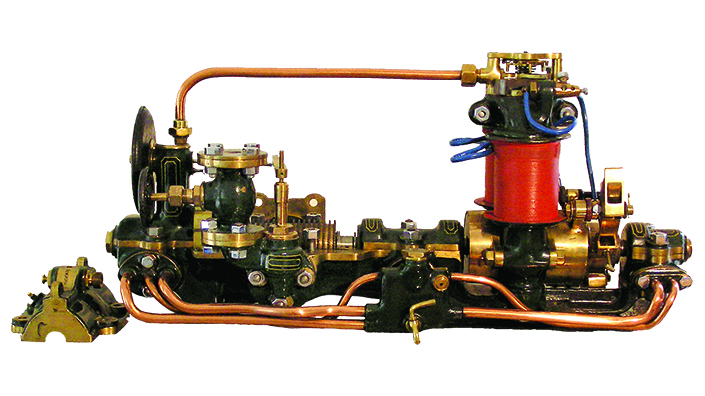Articles
For Sir Charles Algernon Parsons, a long and highly successful engineering career was written in the stars. His father William, the third Earl of Rosse, was a leading astronomer who had designed and built the world’s largest telescope, known as the Leviathan of Parsonstown. He was also president of the Royal Society until 1854, the year of Charles’ birth.
As a child, Charles often spent time in his father’s workshop, listening to the many scientists who visited to observe work being carried out. Charles studied maths at Trinity College, Dublin and the University of Cambridge, but decided to enter engineering instead of pure science.
Following work on torpedoes at W G Armstrong & Co in Newcastle, he went on to a job at Clarke, Chapman & Co in Gateshead, which manufactured electric dynamos. By 1884 he was a partner in the electrical department, pursuing his long-held interest in steam power.
Realising that a significant amount of energy was being lost between the engine and the dynamo, Parsons set about designing a machine that would directly use the steam’s energy.
Parsons’ steam turbine consisted of a rotor in which several wheels were attached to a shaft. Steam entered and expanded, causing the shaft wheels to rotate. Stationary blades forced the steam against the rotating blades, maximising energy efficiency. The steam then continued until it encountered another set of turbine blades, designed to work at a slightly lower pressure. The turbines achieved speeds of up to 18,000rpm.

A 5Kw turbogenerator set, made in 1880
He also designed complementary dynamos to be directly driven by his turbines, starting with a unipolar machine in 1885. Combined steam turbine and turbo-electric generator sets became a practical working proposition, and about 200 sets were in marine service by 1888.
Making waves
The most attention-grabbing public demonstration of Parsons’ steam turbine work came in 1897. Having foreseen their potential to power ships, he had set up the Parsons Marine Steam Turbine Co four years earlier and set about building an experimental vessel – the Turbinia.
As the Prince of Wales, lords of the Admiralty and foreign dignitaries looked on at the Navy Review for Queen Victoria’s Diamond Jubilee on 26 June, the 31m-long, 44-ton displacement steam yacht turned up unannounced and easily evaded a navy picket boat that attempted pursuit, causing a sensation.
Turbines were soon adopted for naval and passenger ships. With the development of reduction gears for cargo vessels, Parsons’ dominance of the waves was complete.
Light work
Years earlier, Parsons had left Clarke, Chapman & Co and started his own firm, C A Parsons & Co. He also established the Newcastle and District Electric Lighting Co, which commissioned the Forth Banks Power Station in Newcastle in 1890, the first time a steam turbine was used in a power station. Parsons’ first condensing turbine was supplied to the Cambridge Electric Lighting Co in 1891, and sets of increasing power and efficiency were made at his Heaton works in Newcastle.
Parsons also continued his family’s devotion to optical matters. Searchlight reflectors were produced at Heaton from 1899, and in 1921 he began purchasing optical instrument and glass companies. In 1925, the same year he was made an honorary member of the IMechE, he acquired Sir Howard Grubb and Sons and started to produce large telescopes. A 74-inch reflector for an observatory in Toronto was the largest such instrument made in Europe, just surpassing his father’s 72-inch Leviathan. Parsons did not live to see the triumph, however, dying in 1931.
Want the best engineering stories delivered straight to your inbox? The Professional Engineering newsletter gives you vital updates on the most cutting-edge engineering and exciting new job opportunities. To sign up, click here.
Content published by Professional Engineering does not necessarily represent the views of the Institution of Mechanical Engineers.